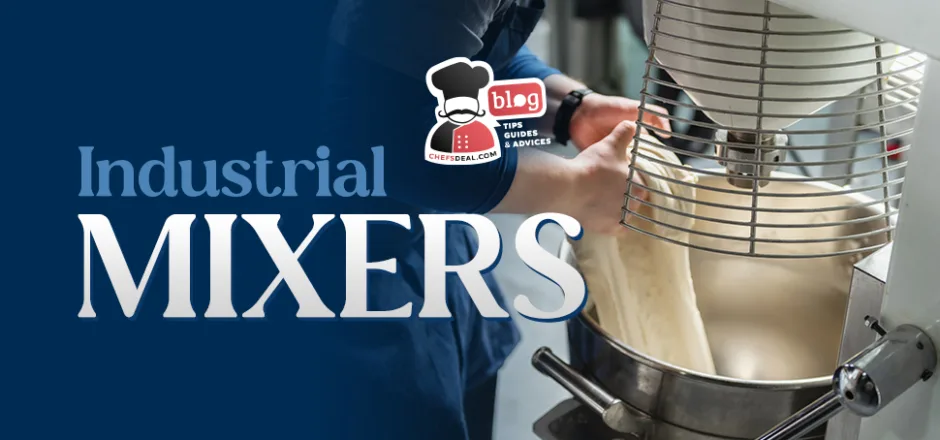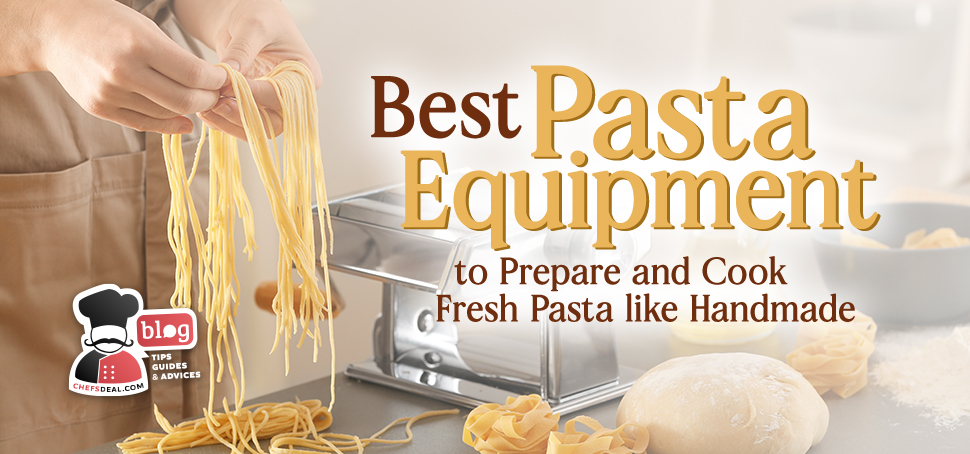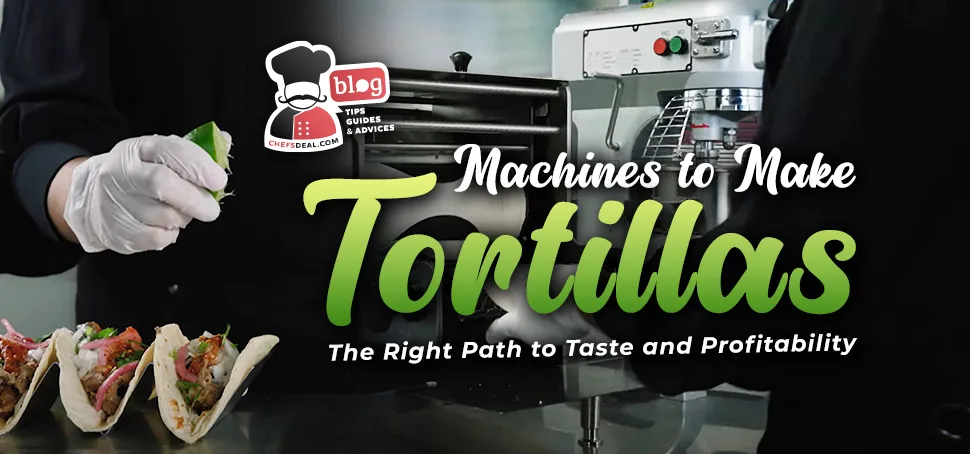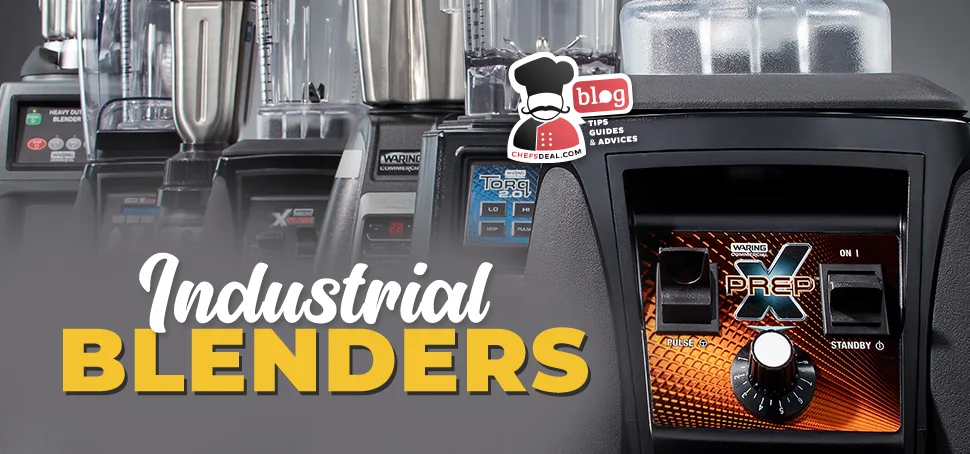Industrial mixers are commercial-grade kitchen equipment used in the foodservice business. An industrial mixer blends, mixes, grinds, whips, and combines numerous food ingredients, making it convenient for different purposes, from making dough to preparing sauce and pastry creams and even shredding chicken and making juice using different attachments. With a powerful motor and large bowls, industrial mixers let you quickly prepare large quantities of food.
Industrial Mixer Types
Three main industrial mixer types are used in commercial kitchens: dough mixers, planetary mixers, and vertical cutter mixers. Each mixer has different purposes, features, and their advantage. Below, you can find each one’s detailed qualities and working principles.
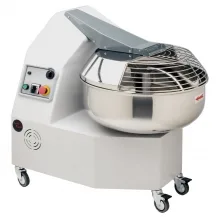
1. Industrial Dough Mixer
Dough mixers, aka spiral mixers, feature a bowl and a spiral agitator. The bowl of the dough mixer rotates around the stationary agitator, kneading the dough and mixing ingredients. It allows the dough to fold thoroughly, producing a better and more uniform dough than other types, especially for pizza and bread dough. Since it is a dough mixer, it is designed to produce the proper gluten structure with the spiral mixers for the best outcomes.

2. Industrial Planetary Mixer
A planetary mixer works with a steady bowl and a rotating shaft. The rotating mixer head reaches every bowl point, ensuring consistency and avoiding unmixed parts. Various accessories can be attached to the rotating mixer head, making slicing, chopping, and whisking possible in one piece of equipment. Planetary mixers feature speed control to adjust the mixing to the desired speed for different ingredients, such as high speed is required for whisking creams but slow for making dough.
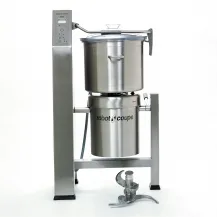
3. Industrial Vertical Cutter Mixer
A vertical cutter mixer is an industrial mixer with multiple functions that can be used as a mixer or a food processor. It consists of a large bowl, a powerful motor, and an agitator to prepare bulk amounts of food quickly, and the available attachments can turn it into a cutter or blender capable of various tasks. It can mix, knead dough and batters, slice and chop veggies, and puree sauces and soups, handling most of the prep job of the commercial kitchens.
5 Main Features To Consider When Buying an Industrial Mixer
1. Size
Industrial mixers can come in countertop, standing, and floor models with different capacities. Also, the size of the bowl determines the amount the mixer can mix. Countertop industrial mixers mostly have a capacity of less than 10 quarts (9.46 lt), which holds 4-5 lbs (1.8-2.26 kg). They mostly feature a smaller motor with 12 horsepower, which is unsuitable for mixing large amounts for a long period.
Standing and floor mixers come with a large capacity of 20 to 30 quart (18-28 lt), ideal for high-volume businesses and bakeries. They mostly come with a 1 to 3-horsepower motor and can handle 15 to 45 pounds of dough (6.8-20.4 kg) and 4 to 6 quarts (3-5 lt) of whipped cream. There are also much bigger industrial mixers for larger businesses with a capacity of 60 to 140 quarts (56.78 to 132.48 lt.) Their extremely powerful motors can handle large quantities for extended periods.
2. Motor
Larger industrial mixers feature stronger motors to handle more ingredients and mix for long periods. They are also designed to handle thicker batters and dough better, which requires more power. While a 1/6 horsepower motor is commonly used in a 5-quart countertop mixer (4.73 lt,) a 60-quart floor mixer (56.8 lt) features a 3-horsepower motor.
3. Drive System
Industrial mixers are equipped with either a gear-driven or a belt-driven mechanism to turn the agitator to mix the ingredients. They are both built for commercial use but have different advantages and disadvantages.
Belt-driven industrial mixers turn the agitator using a basic strap system resembling an engine belt, which is easy to repair and maintain. However, the system is susceptible to belt slip, and inefficient grip between the belt and the drive can decrease the mixer’s velocity ratio.
On the other hand, gear-driven mixers use an inner system of gears and cogs to minimize slippage and stutters. The gears reduce the possibility of slipping in the driving system. However, gear-driven systems cost more than belt systems for maintenance and repairs.
4. Speed
Industrial mixers feature different working speeds that impact how rapidly the agitator or the bowl spins. While most basic models feature 3-speed settings, some high-end models can have up to 12-speed settings for more precise results. Some mixers include a slow-start option, letting you add dry ingredients without messing, and some feature a folding option to gently fold the dough without letting the air out.
Another point to consider is whether the mixer allows you to adjust the speed while running. While some mixers allow you to change the speed while running, some models must be shut off to change the mixing speed. Since not all mixers are designed to withstand the strains of on-the-fly changes, learn about your equipment’s proper usage and features before using them to ensure safety.
Reading the manufacturer’s instructions will help you produce proper and consistent goods since various ingredients require different mixing speeds to combine better. Additionally, remember that different attachments will operate at different speeds.
5. Bowl Lift
As industrial mixers feature a tilt-head agitator, large mixers mostly have a bowl lift, which can be manual or automatic. Large mixers can weigh 10 pounds (4.53 kg) or more, and the bowl lift feature eliminates any hard lifting. The arms of a bowl lift mixer attach to the sides of the mixing bowl and lift the bowl for mixing and lower it when the mixing is done. It can be done either manually using a lever or electronically with a single button push.
How To Choose The Right Industrial Mixer?
Before choosing an industrial mixer, making these considerations can help to ensure you get the right and best one for your business.
What Will You Mix?
Deciding what you will use a commercial mixer for will help you choose the proper one for the job because every mixer is designed for different purposes, and not every batter and dough has the same consistency. For example, a thick bread dough needs more power to be mixed and kneaded than the power to whip cream. So, not every mixer is suitable for every task, and choosing the one depending on the goods you will use it for will ensure the best outcomes and prevent extra expenses.
How Much Will You Mix?
How big your business is and the amount you will be mixing a day will determine the size of your mixer. As a pizzeria or bakery mixing dough all day, you can opt for a 40-quart floor-model dough mixer (37.85kg.) A 5 to 20-quart planetary mixer (4.73 to 18.93 kg) will be enough for a small restaurant.
Standard duty mixers are ideal for small restaurants, cafes, and catering businesses where you mix whipped creams, batters, sauces, and small amounts of dough. On the other hand, bakeries, pizzerias, and high-volume restaurants will need a heavy-duty mixer.
To Sum Up
Industrial mixers are crucial for various industries, including commercial kitchens. They are incredibly versatile and can perform tasks like mixing, kneading, pureeing, and beating ingredients. In bakeries, for example, they are used to make dough, while different attachments can mash potatoes, mix sauces and soups, whisk cream, and make juice. Using an industrial mixer can save you time and effort since it can mix large amounts in a short time. Additionally, it ensures product consistency and quality, which is essential in any industry.
You may also wish to read our blog about essential bakery equipment if you are thinking of starting a bakery or to get detailed information about all bakery equipment.

